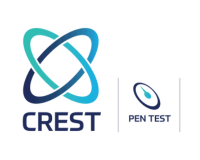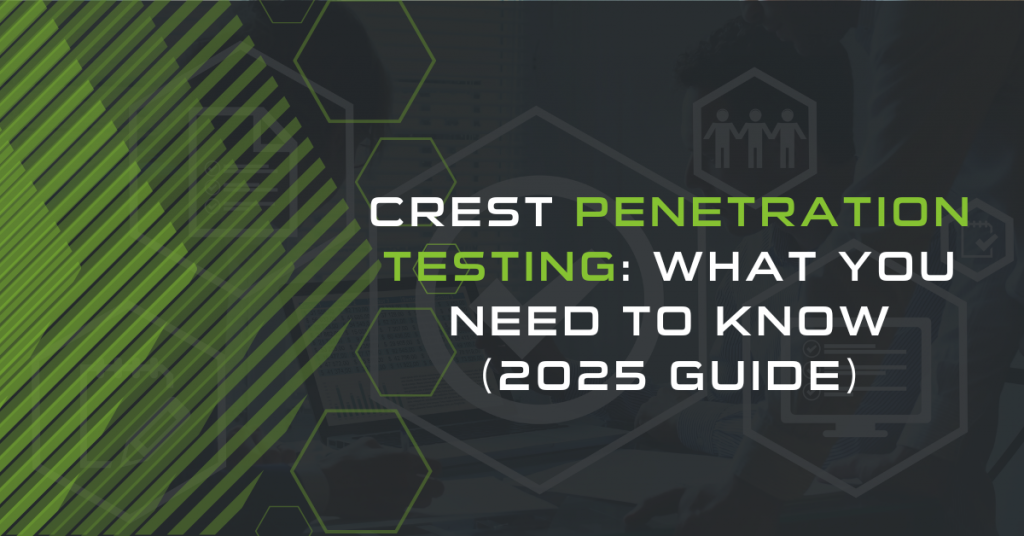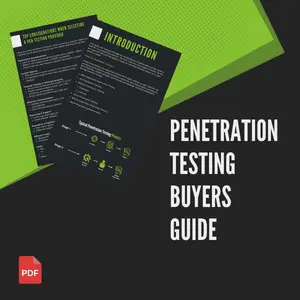What is Web Application Penetration Testing?
Web application penetration testing is a critical evaluation of a web application used to find, evaluate, and fix vulnerabilities. Consider it an all-encompassing system health checkup that aims to ensure application operation, data integrity, and, most importantly, strong application security.
Working systematically, the tester assesses each component for possible weaknesses that could allow breaches or unauthorised access. Testers adhere to a web penetration testing methodology adapted to the examined application.
Web Application Vulnerabilities
Want to find out if your Web Application has these vulnerabilities?

What does choosing a CREST provider mean?
Grey, Black and White Box Penetration Testing
What does Website Security Testing include?
What are the benefits of Web Application Penetration Testing?
Web app pen testing identifies the security gaps in your web applications, offering a path to remediation before attackers exploit them.
To ensure you get the most out of a web application security assessment. Please take a look at our handy guide (How to plan Web Application Penetration Testing)
Web Application Penetration Testing Methodology
A methodology is a process a penetration tester follows to ensure the application has been appropriately tested. It includes tips and guidance that will help a tester ensure depth in the testing. Quality penetration testing should be conducted to the standards defined by leading industry experts. Our pen testing team follow these guidelines closely, ensuring that all security vulnerabilities are identified.
When it comes to web applications, this is undoubtedly OWASP (The Open Worldwide Application Security Project). OWASP provides a testing guide that penetration testers should follow. OWASP standard web application assessments are divided into subsections, which follow the industry standard as of 2024; testing each ensures the application has been thoroughly tested.
The initial phase involves collecting as much information as possible about the web application. This can include techniques such as search engine discovery, fingerprinting the web server and mapping the application architecture.
This stage focuses on verifying the overall security of the application’s deployed environment. The Penetration Tester will examine the server configuration, test cross-domain policies, and attempt to brute-force files and directories.
In this stage of the methodology, the tester will evaluate how the web application handles user identities. This includes the process for user registration and account recovery mechanisms. The tester will attempt to identify if verification checks can be bypassed or if accounts can be actively enumerated using the website function.
In this phase, the penetration tester will assess all mechanisms the application uses to verify the identity of users. This will include weak password policies, authentication mechanisms (Including Multi-Factor Authentication) and the ability to bypass the authentication mechanism.
Often referred to as Access Controls, the tester will ensure that users can only access the resources they are permitted to access. The penetration tester will conduct the testing from all user roles the application offers.
This area focuses on examining how the web app handles sessions. This includes things such as session creation, management, and termination. The Penetration Tester will attempt to identify issues such as session fixation, hijacking, and expiration controls.
Arguably, it is the most time-consuming part of web application penetration testing. Data Validation testing attempts to identify vulnerabilities such as cross-site scripting, SQL injection, XXE injection and many other injection-based issues.
In this phase of the test, the tester will review how the application handles errors. These errors can either be provoked by the tester or passively found during other phases of the testing. Errors can disclose information needlessly and prove useful to attackers when trying to understand the application’s hidden components and dependencies.
This section involves verifying the application’s use of cryptographic techniques. The tester will ensure the data is adequately encrypted, both in transit and at rest, and examine the application protocols and algorithms.
While unique to every web application penetration test, the tester will examine the application’s business logic to identify any perceived flaws. The tester will also examine the application’s workflows and processes, ensuring that the logic cannot be bypassed or tampered with to provoke unintended actions.
This phase focuses on the security of the application’s client side. The tester will attempt to identify issues with JavaScript, local storage, and insecure usage of client-side validation.
If the web application utilises an API. The API will be assessed for issues. Common issues with APIs include authentication, rate-limiting, mass assignment, authorisation, and input validation issues. An API can often directly route critical business functions and data.
Penetration Test Reports, Delivered.
Our comprehensive, professional reports clearly communicate risks, provide detailed remediation guidance, and demonstrate compliance with industry standards. Our deliverables are available through the Sencode Portal or accessible via a downloadable PDF.
Contact a consulting team member by phone, email, or pigeon post. We will then discuss whether we can help you and arrange a scoping meeting to discuss your requirements.
In the scoping meeting, our team will discuss your requirements in further detail. Our team will ask questions in regards to the following:
Our expert consultants will discuss and finalise which digital assets you need testing in the scoping meeting. Based on the requirements, we will then assemble a project proposal and quote and agree on a schedule for conducting the security assessment. Our proposal document will include the following information:
The Penetration Testing starts. A member of our Penetration Testing team will liaise with a member of your company throughout the entire testing process. You will be the first to know if we have any questions or concerns. Our testing team will be on hand throughout the penetration test lifecycle to answer any questions or concerns. Our tester will:
A Penetration Test is useless without a well-written report. Our reports are written in plain English, concise, and thoroughly documented. The Penetration Test Report is typically furnished within 5 days after the testing phase is complete. If you are interested in seeing an example report, please contact our team.
Each report details the following:
At Sencode, we offer free retesting for every Penetration Test we conduct. You fix the issues; then we will verify they can no longer be exploited by an attacker. Our team will arrange a mutually suitable time to conduct the retest, after the remediation efforts have taken place. Our tester will follow these steps:
Our clients receive a testing certificate that can be shared with partners and customers, showing that their company takes security seriously. The certificate and document are designed to be easily digested by third-party suppliers, the document removes the technical details and can be safely distributed.
The Security Testing Certificate is available on request, after the retest has been complete. The security certificate shows:
Get in touch for a consultation.
Contact a consulting team member by phone, email, or pigeon post. We will then discuss whether we can help you and arrange a scoping meeting to discuss your requirements.
In the scoping meeting, our team will discuss your requirements in further detail. Our team will ask questions in regards to the following:
Testimonials
Huler
Trinity College Dublin
Diversity and Ability
Verve Group
Pip Studios
Home Group









Frequently Asked Questions: Web Application Penetration Testing
Web Application Penetration Testing has become more than just important—it’s absolutely vital. Cyber threats have seen a significant upswing in recent years (Driven by many factors), making the implementation of robust security measures no longer a choice but an absolute necessity for any business that wants to keep its user data under wraps.
Web applications often serve as the digital frontline for businesses (and, in many cases, the products the company sells), making them a desirable target for cyber attackers. It’s like an ongoing arms race against capable adversaries—the necessity to discover potential vulnerabilities that might have been missed by developers due to tight deadlines or simple oversight is absolutely critical. Our penetration testing solution can help identify these vulnerabilities before an attacker does.
By ensuring the security of your web applications, you’re safeguarding your sensitive data, such as customer information and proprietary business data, and your company’s reputation.
When your web applications have undergone rigorous Web Application Penetration Testing, you help your business avoid financial losses associated with a potential security breach. In addition to this, it ensures regulatory compliance. Above all, a securely tested web application provides the continuity of business operations and delivers a smooth, reliable experience to the user.
The cost of web app pen testing in the UK can vary widely based on several factors:
Complexity and size of the web application: A larger application with more features and functionalities will require more time and effort to test, increasing the cost.
User roles: An application featuring multiple user roles—such as guest, standard, admin, or super admin—will require significantly more testing time than an application with a single role. This extended timeframe is attributed to the tester’s need to thoroughly examine horizontal and vertical access controls for each distinct role.
Depth of the penetration test: A simple vulnerability assessment will cost less than a deep-dive penetration test that aims to exploit and demonstrate vulnerabilities.
Reputation and experience of the testing firm: Established firms with a strong track record might charge more than smaller or newer firms.
All of these things should be considered before committing to purchasing a penetration test from a firm. Speak to a senior consultant and ask questions to understand how the testers will conduct the assessment.
For a detailed breakdown of the costs of penetration testing. Read our detailed guide “How much does Penetration Testing Cost?“
Web application penetration testing should be considered a regular aspect of any mature software development and maintenance lifecycle. However, there are several key instances when it becomes particularly crucial.
First and foremost, it should be performed before launching any new web application. This allows fixing any vulnerabilities before they can be exploited in the wild. It’s also important to schedule regular tests – at least annually, although ideally every quarter – to check for new vulnerabilities that might arise due to changes to the application or newly discovered threats.
Any significant change to the application’s infrastructure or design should trigger a new web app penetration test. Introducing new features, significant software updates, server migration, or changes in user roles and access controls, for instance, can open up new vulnerabilities that need to be identified and mitigated.
A variety of sophisticated tools are used to ensure the robustness and security of a modern web application. Central to a penetration tester’s toolkit is Burp Suite, a versatile web application security testing tool that is the de facto standard for security testers.
Burp Suite excels in providing automated and manual testing features, facilitating target mapping, and comprehensive attack surface analysis. Penetration Testers use Burp Suite to find XSS, SQL Injection, SSRF, and many other issues. The input from a skilled security professional helps discover, verify, and push each vulnerability to its limits.
To ensure the robustness and security of a modern web application, a penetration tester’s toolkit extends beyond just Burp Suite. Open-source community offerings, such as OWASP ZED Attack Proxy (ZAP), are also widely employed. However, a critical distinction between ZAP and Burp Suite lies in their functionality and user bases. While ZAP is a competent tool, it often requires a more hands-on approach and a deeper understanding of the testing process, making it more suitable for developers and functional testers.
In contrast, Burp Suite, with its balance of automated and manual testing features, is often favoured by professional penetration testers due to its flexibility and the depth of control it provides.










